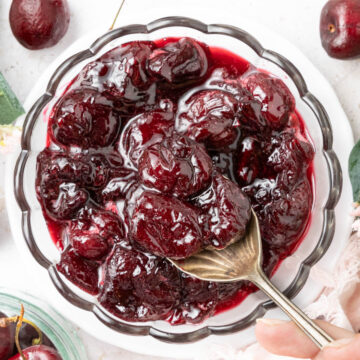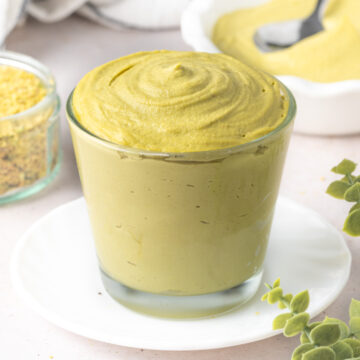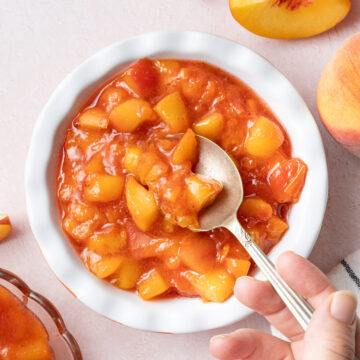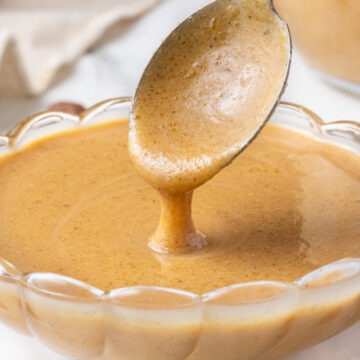This easy Orange Curd recipe is made with 4 ingredients only and will be ready in less than 30 minutes. It is the perfect orange cream to serve over scones, pancakes or waffles, to use as a cake filling, as a dessert topping like ice cream or mixed with granola or yogurt.
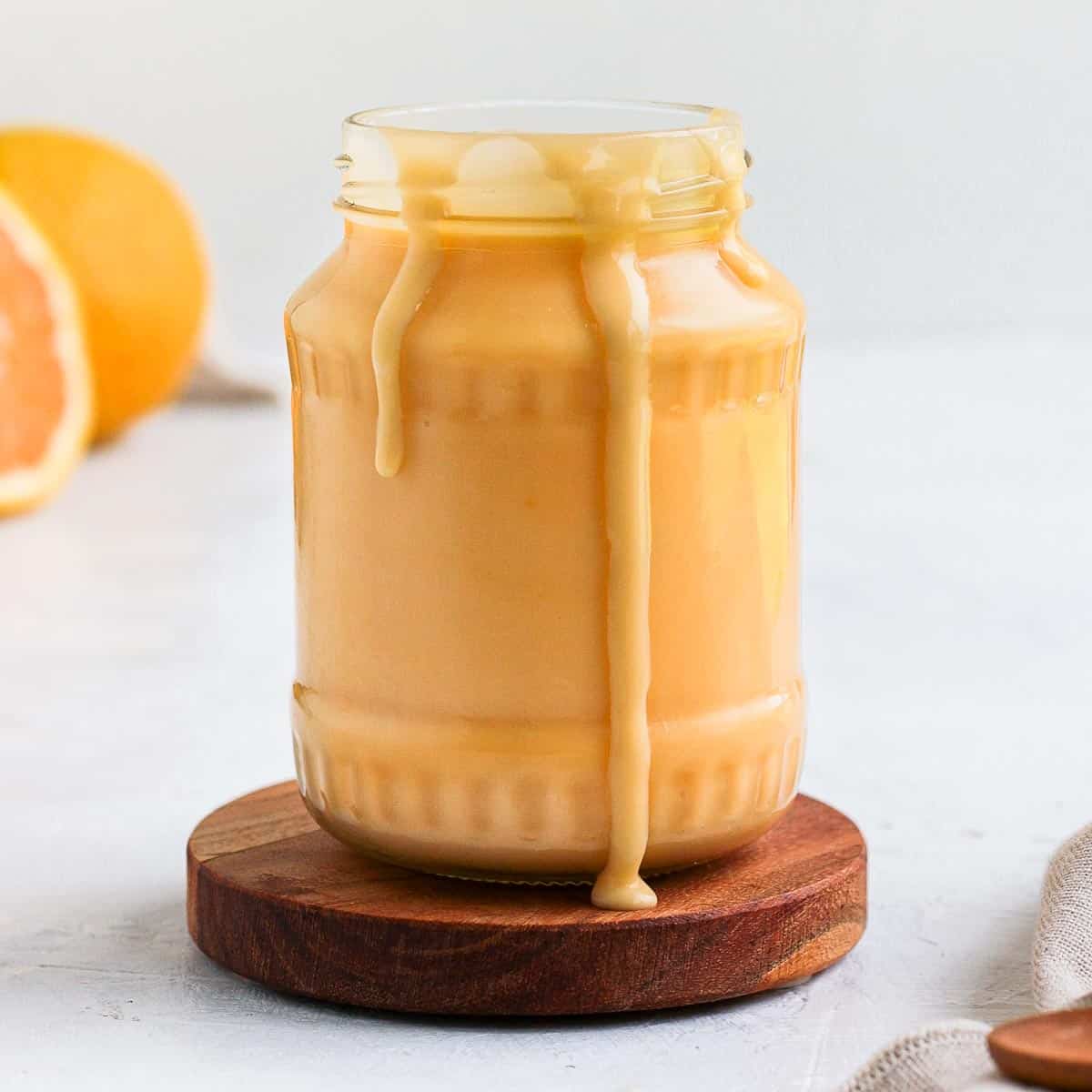
Jump to:
Why we love this recipe
No, Curds are not just meant for Lemons! Using other Citrus Fruits like Oranges are just as great if you are after a slightly sweeter (but just as flavourful) curd.
This easy recipe is made from 4 ingredients only and will be ready in less than 30 minutes. No need for special equipment or fancy techniques like a double-boiler either - you just need a saucepan!
This orange curd is more on the thin, creamy side - which is exactly the texture I was after. Nothing too thick or lumpy here, just a smooth smooth orange cream that will make the best breakfast and dessert topping, cake filling or even pastry filling like these Orange Tartlets or Chocolate Orange Tartlets!
More Curd Recipes:
Ingredients
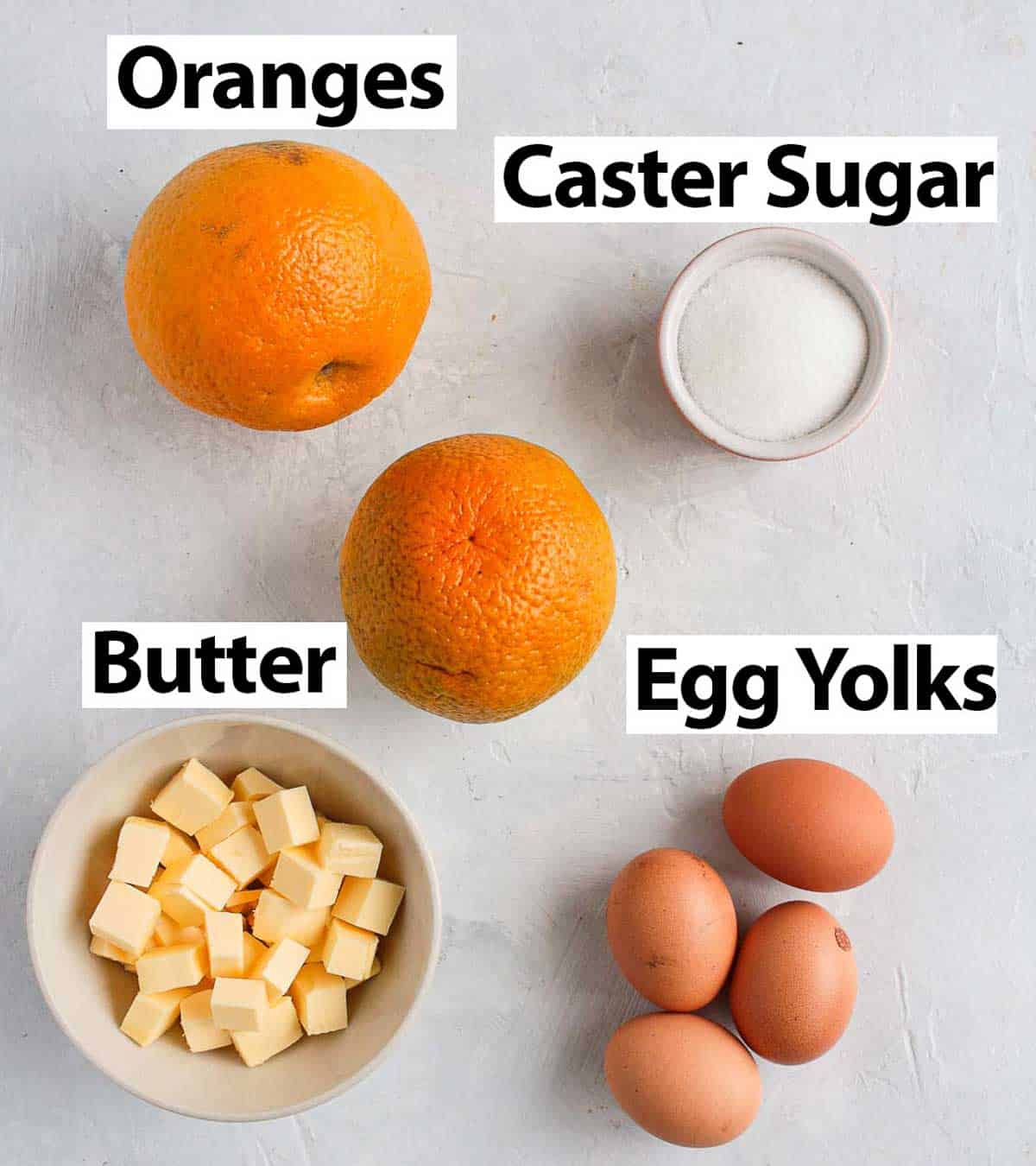
This easy orange curd recipe only requires 4 basic ingredients (scroll down to recipe card for all quantities):
- Oranges: we are using both the Juice and Zest for this recipe to pack it with as much orange flavour as possible! Try to go for variety of oranges known to produce a lot of (sweet) juice like Navel or Valentia.
- Sugar: a basic Caster Sugar (or Fine White Granulated Sugar), although you could also use Brown Sugar for a slightly different taste. For a sugar-free orange curd, replace the sugar with a natural sweetener.
- Butter: Unsalted Butter, cut into small cubes. It doesn't need to be super soft but I like to take it out of the fridge about 10, 15 minutes and cube it before starting so it is not too cold either.
- Egg Yolks: medium size, at room temperature. If you want a thicker orange curd, you can add an extra egg yolk.
Optional Additions
- Cornstarch: if you are after a slightly thicker curd to use as a spread, you can also add a little bit of cornstarch to the curd. This is completely optional and just depends on the texture you are after.
- Lemon Juice: depending on the natural flavour of the orange, I sometimes like to add (or substitute) a little bit of lemon juice to balance an overly sweet orange. Simply taste the curd and adjust the flavours if needed!
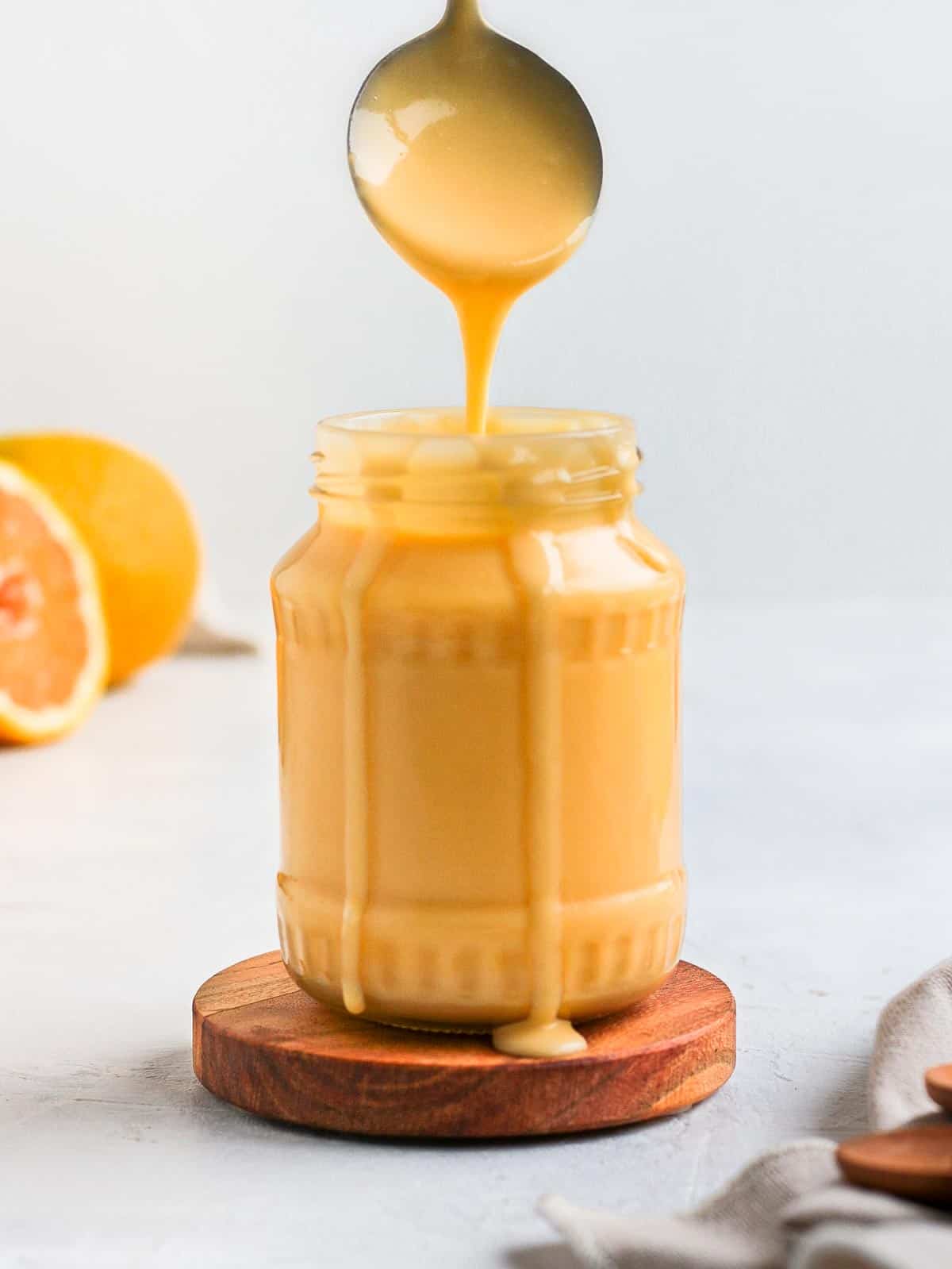
How to make Orange Curd
Some curd recipes require the use of a double-boiler, but I find the process to take much, much longer. As long as you are using low heat, making the orange curd directly in a saucepan on the stove will be fine.
- Take the Butter out of the fridge, cut it into small cubes and set aside.
- Zest and Juice the Oranges. Make sure to measure the liquid as opposed to rely on the number of oranges - some fruits will give you much more (or less) juice than others.
- Photo 1: Place the Orange Juice & Zest (and optionally the lemon juice), Sugar and Egg Yolks in a small saucepan. Whisk to combine then turn on low heat. Stir until the sugar has dissolved then continue to cook for a few minutes until the liquid starts to slightly thicken.
Note: if you are adding Cornstarch, you will want to incorporate it with the orange juice/eggs/sugar during this step as well. It will start to thicken more quickly as well so you won't need to wait a few minutes before adding the butter.
- Photo 2: Add the cubed Butter, a little bit at the time. Stir with a wooden spoon or stiff spatula until the butter has fully melted before adding more. Continue until all the butter has been added and incorporated.
- Photo 3: still on low heat, continuously stir until the curd starts to thicken. Depending on the temperature of your stove, it could take anywhere from 5 to 15 minutes. Make sure to keep it on low heat (you never want it to boil) to insure the egg yolks don't turn into scrambled eggs.
To know the orange curd is ready, either use a food thermometer (the curd is cooked when it reaches 82'C/180'F) or coat the back of a spoon with the curd. Draw a line in the curd with your finger and tip it down. If the liquid drips back over the clear line, the curd needs to cook for longer. If it stays clear, it is ready.
- Photo 4: pour the orange curd through a thin mesh sieve to remove any bits of eggs that might have cooked and the orange zest. The curd will still appear to be quite liquid, it's normal - it will set when it cools in the fridge.
Leave to cool down at room temperature then transfer into a clean jar or container. When cool, place in the fridge to set for at least 2 hours - preferably overnight.
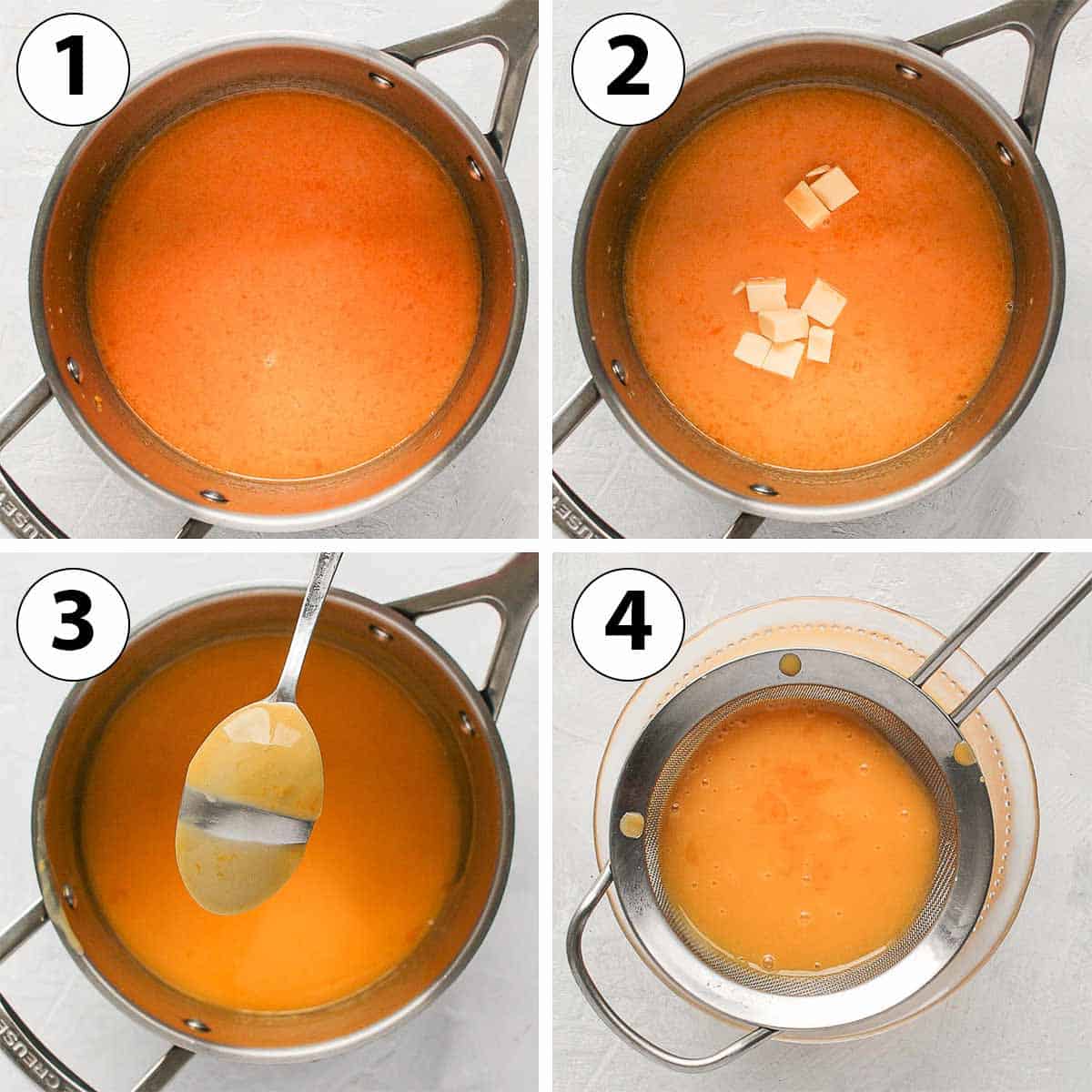
Tips & Troubleshooting
- How to know when a Curd is cooked: the most accurate way to know will be with a food thermometer (the curd is cooked when it reaches 82'C/180'F). Otherwise, coat the back of a spoon with the curd, draw a line in the curd with a finger then tip it down. If the curd drips back over the line, it needs more cooking. If the line stays clear, it's ready.
- The curd is too thick: if after setting in the fridge, you find the curd to be too thick, simply whisk a little bit more Orange Juice (or lemon juice for a different flavour) until smooth.
- The curd is too thin/liquid: this recipe will give you a rather thin curd. If you are after a thicker cream, add a little bit of cornstarch to the mix. If you find it too thin after chilling it, place the orange curd back in the pot. In a separate bowl, whisk together a little bit of cornstarch and orange juice then add it to the curd. Cook on low heat until it thickens.
- Adjusting the flavours: this recipe is relatively low in sugar as I used naturally sweet oranges. If your oranges are not as sweet, you might want to increase the quantity of sugar. You can also replace a little bit of the orange juice with lemon juice to get a less sweet curd.
How to use Orange Curd
For breakfast or afternoon tea over Scones or Pancakes, as a filling for Cakes, over desserts like this Orange Almond Cake and Orange Loaf Cake, inside Tartlet Shells to make Orange Curd Tartlets (or using a Sweet Shortcrust Pastry to make a large tart).
The orange curd will also be delicious as a topping over Orange Mousse Cups, ice cream or yogurt!
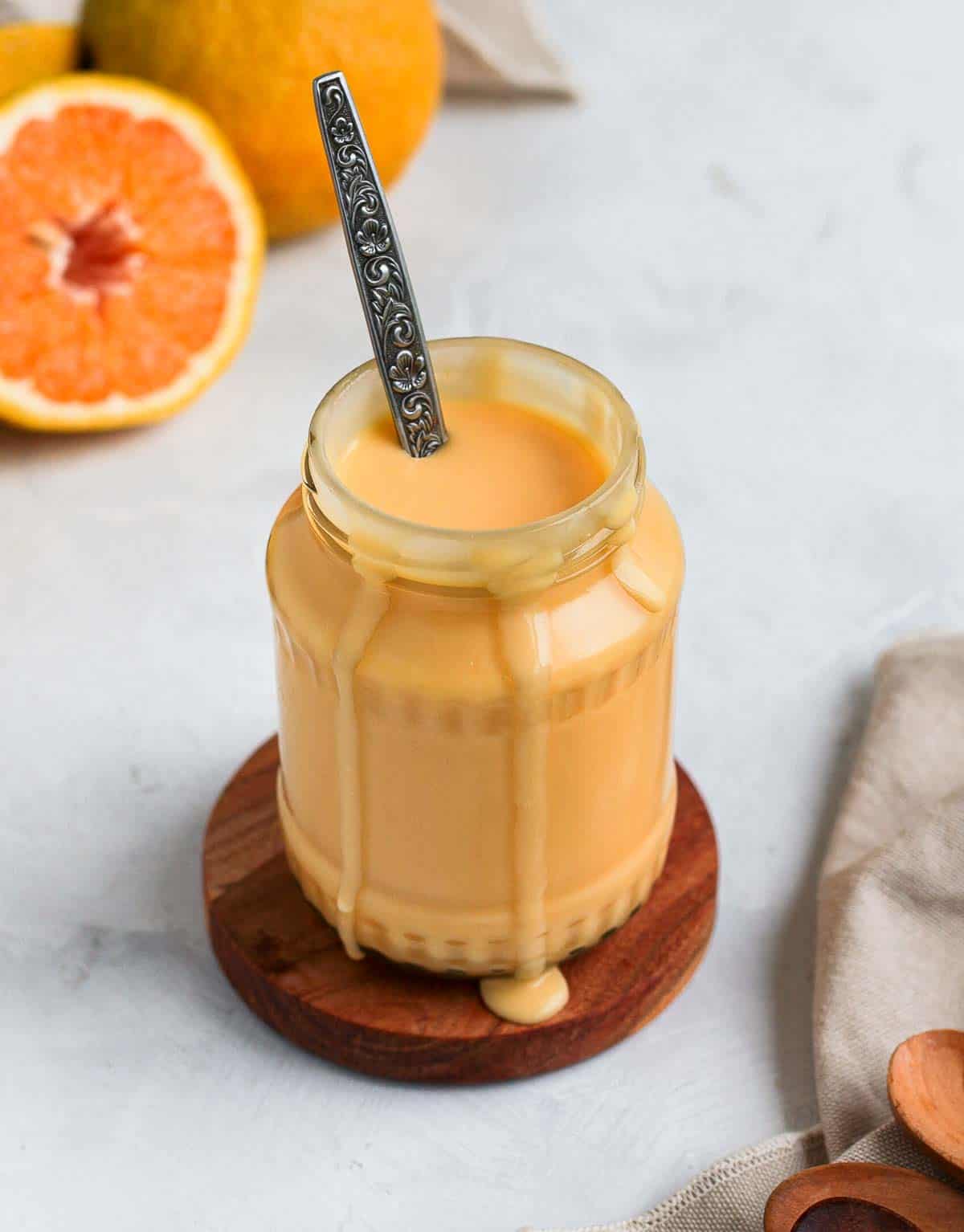
Recipe FAQs
I would recommend using freshly squeezed orange juice for the best flavours. If using bottled juice, make sure to use a 100% orange juice with no added sugar.
Keep them to make Financiers (French Almond Tea Cakes), Raspberry Mousse or a Pavlova!
Yes, but it will take much much longer for the curd to cook. As long as you are using low heat, you should be fine to cook it straight in the saucepan!
Also make sure to strain the curd through a thin mesh sieve when it's cooked to remove any bits of cooked eggs.
This recipe makes more of a thin than a thick curd, but you could either add one egg yolk or one tablespoon of cornstarch if you wanted it to be thicker.
Storing & Freezing
How to store this Orange Cream: once back at room temperature, transfer it to a clean jar (preferably glass jar) and keep it in the fridge.
How long will it last: I recommend using it within a week. Because it is relatively low in sugar, this recipe is not made to be preserved or canned.
Freezing: I do not recommend freezing curds.
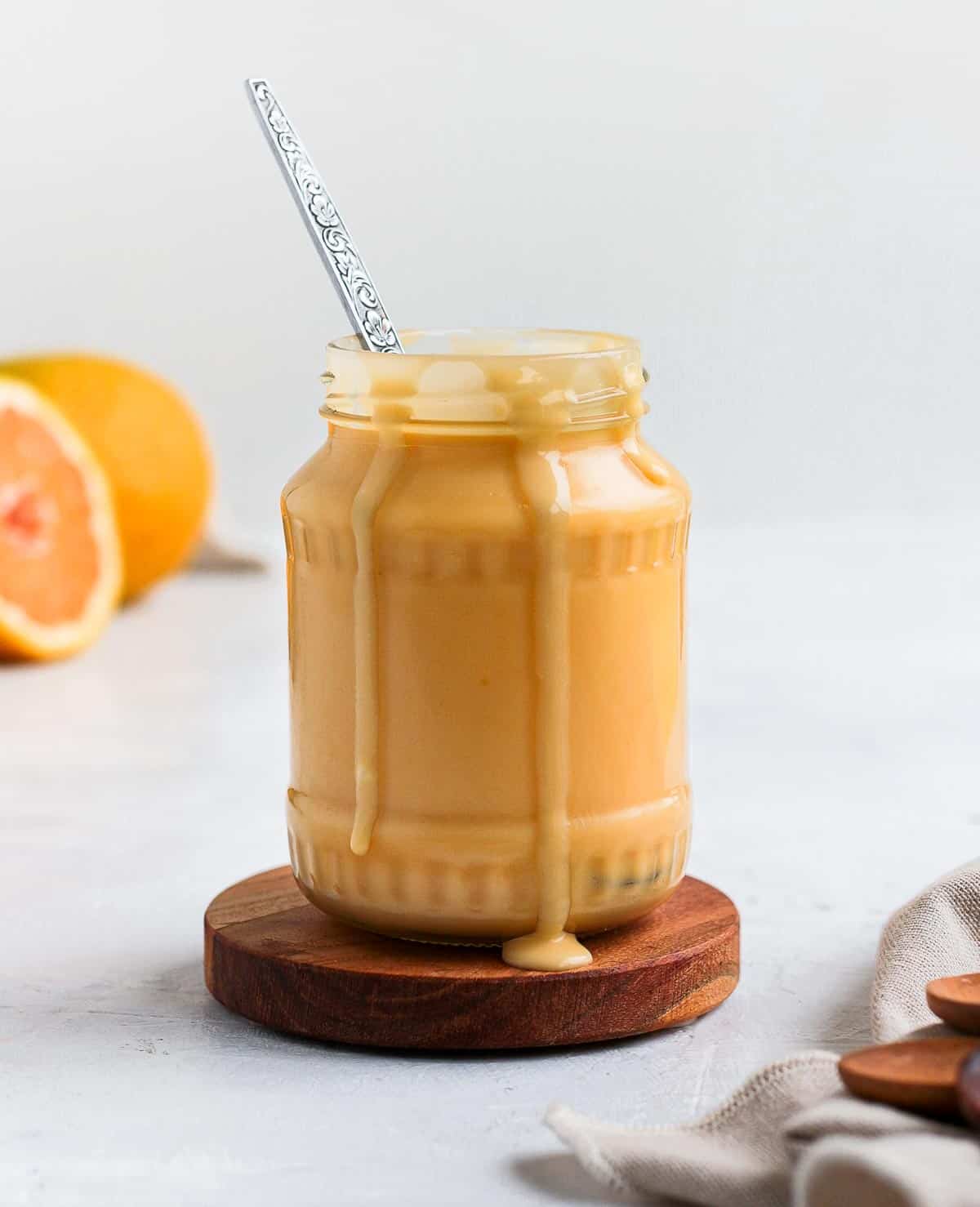
More Fruit Spreads & Sauces
- Berry Compote
- Blueberry Coulis
- Strawberry Coulis
- Raspberry Coulis
- Blueberry Compote
- Mango Coulis
- Passion Fruit Coulis
Made this recipe?
Let us know if you liked it by leaving a comment below, and tag us on Instagram @a.baking.journey with a photo of your creation!
Recipe
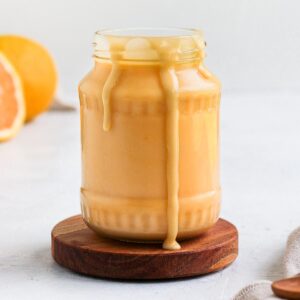
Orange Curd
Ingredients
Orange Curd
- 4 Egg Yolks - at room temperature
- 50 gr (1/4 cup) Caster Sugar - or fine white granulated sugar
- 125 ml (1/2 cup) Orange Juice - about 2 to 3 large oranges
- 2 Orange Zest
- 75 gr (5 tablesp.) Unsalted Butter - at room temperature
Optional
- 1 tablesp. Cornstarch
- 1 tablesp. Lemon Juice
Disclaimer
I highly recommend using the measurements in grams & ml (instead of cups & spoons) for more accuracy and better results.
Instructions
- Cut the Butter into small cubes and set aside. Zest the Oranges then juice them.
- Place the Orange Juice, Zest (and optionally lemon juice), Egg Yolks and Sugar in a small saucepan and whisk to combine (see note 1 if adding cornstarch). Place on low heat and keep stirring until the sugar has dissolved and the liquid starts to slightly thicken.
- Add the small cubes of Butter a little bit at the time, stirring until completely melted and combined before adding more (see note 2).
- When all the butter has been incorporated, continue to cook on low heat for 5 to 15 minutes (see note 3) or until slightly thick (the curd will finish thickening when chilled).
- Remove from the heat and leave to cool down at room temperature. Transfer to a clean jar and place in the fridge to set for at least two hours, or preferably overnight.
Tried this recipe? Make sure to leave a comment and star rating below!
Notes
- Orange: make sure to measure the orange juice instead of relying on the number of oranges for more accuracy. It should be about two large oranges for the juice, as well as the zest of two oranges.
- Sugar: this recipe is relatively low in sugar as the oranges are naturally quite sweet. If you are after a sweeter curd, you can absolutely increase the quantity of sugar. I recommend tasting the oranges first; if they don't see quite sweet, increase the sugar slightly.
- Cornstarch: this recipe makes more of a thin than thick curd. For a thicker curd, either add one egg yolk, or use cornstarch.
- Lemon Juice: I like to substitute one tablespoon / 15 ml of orange juice with lemon juice to add a little bit of acidity to the curd.
- If you are adding cornstarch, whisk it with the rest of the ingredients first before turning on the heat (cornstarch tends to get lumpy if added straight to a warm liquid). It will start to thicken much more quickly with the cornstarch. Has soon as the sugar has dissolved, start adding the butter. Once the butter has been added, cook for about 2 to 3 minutes (or until you see a small simmer) then remove from the heat.
- At this point, I recommend tasting the curd and adjusting the sweetness to your liking by adding more sugar if needed, or a little bit more lemon juice if too sweet.
- The time it takes to cook will depend on the temperature of your stove. To know the orange curd is ready, either use a food thermometer (the curd is cooked when it reaches 82'C/180'F) or coat the back of a spoon with the curd. Draw a line in the curd with your finger and tip it down. If the liquid drips back over the clear line, the curd needs to cook for longer. If it stays clear, it is ready.


